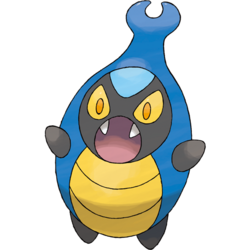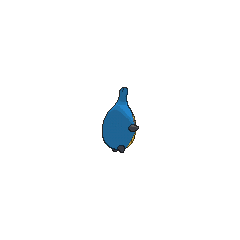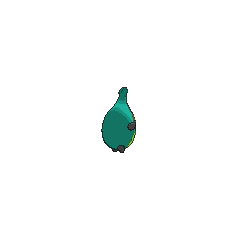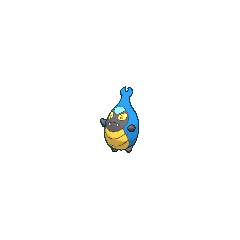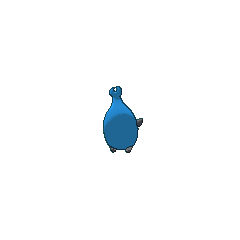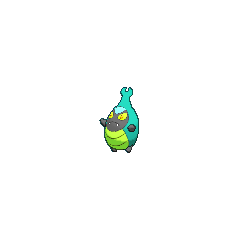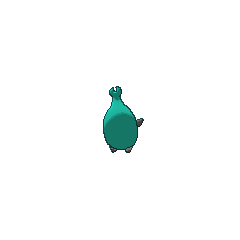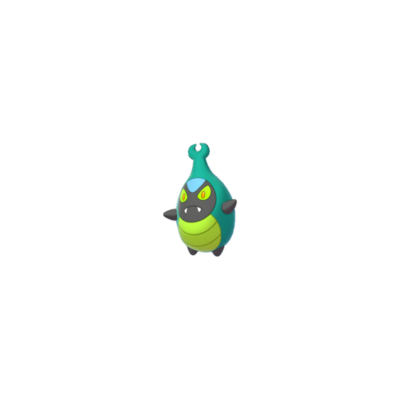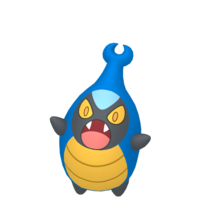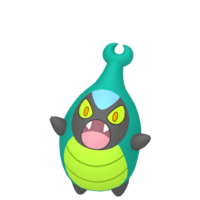|
|
| Line 292: |
Line 292: |
| ====By {{pkmn|breeding}}==== | | ====By {{pkmn|breeding}}==== |
| {{learnlist/breedh/8|Karrablast|Bug|Bug|5}} | | {{learnlist/breedh/8|Karrablast|Bug|Bug|5}} |
| {{learnlist/breed8|{{MSP/8|010|Caterpie}}{{MSP/8|012|Butterfree}}{{MSP/8|127|Pinsir}}{{MSP/8|213|Shuckle}}{{MSP/8|291|Ninjask}}{{MSP/8|415|Combee}}<br>{{MSP/8|451|Skorupi}}{{MSP/8|452|Drapion}}{{MSP/8|543|Venipede}}{{MSP/8|544|Whirlipede}}{{MSP/8|545|Scolipede}}{{MSP/8|557|Dwebble}}<br>{{MSP/8|558|Crustle}}{{MSP/8|595|Joltik}}{{MSP/8|596|Galvantula}}{{MSP/8|632|Durant}}{{MSP/8|636|Larvesta}}{{MSP/8|637|Volcarona}}<br>{{MSP/8|736|Grubbin}}{{MSP/8|737|Charjabug}}{{MSP/8|738|Vikavolt}}{{MSP/8|751|Dewpider}}{{MSP/8|752|Araquanid}}{{MSP/8|768|Golisopod}}<br>{{MSP/8|850|Sizzlipede}}{{MSP/8|851|Centiskorch}}|Bug Bite|Bug|Physical|60|100|20||'''}} | | {{learnlist/breed8|{{MSP/8c|010|Caterpie}}{{MSP/8c|012|Butterfree}}{{MSP/8c|127|Pinsir}}{{MSP/8c|213|Shuckle}}{{MSP/8c|291|Ninjask}}{{MSP/8c|415|Combee}}<br>{{MSP/8c|451|Skorupi}}{{MSP/8c|452|Drapion}}{{MSP/8c|543|Venipede}}{{MSP/8c|544|Whirlipede}}{{MSP/8c|545|Scolipede}}{{MSP/8c|557|Dwebble}}<br>{{MSP/8c|558|Crustle}}{{MSP/8c|595|Joltik}}{{MSP/8c|596|Galvantula}}{{MSP/8c|632|Durant}}{{MSP/8c|636|Larvesta}}{{MSP/8c|637|Volcarona}}<br>{{MSP/8c|736|Grubbin}}{{MSP/8c|737|Charjabug}}{{MSP/8c|738|Vikavolt}}{{MSP/8c|751|Dewpider}}{{MSP/8c|752|Araquanid}}{{MSP/8c|768|Golisopod}}<br>{{MSP/8c|850|Sizzlipede}}{{MSP/8c|851|Centiskorch}}|Bug Bite|Bug|Physical|60|100|20||'''}} |
| {{learnlist/breed8|{{MSP/8|214|Heracross}}|Counter|Fighting|Physical|—|100|20}} | | {{learnlist/breed8|{{MSP/8c|214|Heracross}}|Counter|Fighting|Physical|—|100|20}} |
| {{learnlist/breed8|{{MSP/8|451|Skorupi}}{{MSP/8|452|Drapion}}|Knock Off|Dark|Physical|65|100|20}} | | {{learnlist/breed8|{{MSP/8c|451|Skorupi}}{{MSP/8c|452|Drapion}}|Knock Off|Dark|Physical|65|100|20}} |
| {{learnlist/breed8|{{MSP/8|451|Skorupi}}{{MSP/8|452|Drapion}}|Night Slash|Dark|Physical|70|100|15}} | | {{learnlist/breed8|{{MSP/8c|451|Skorupi}}{{MSP/8c|452|Drapion}}|Night Slash|Dark|Physical|70|100|15}} |
| {{learnlist/breed8|{{MSP/8|123|Scyther}}{{MSP/8|212|Scizor}}{{MSP/8|291|Ninjask}}{{MSP/8|557|Dwebble}}{{MSP/8|558|Crustle}}{{MSP/8|595|Joltik}}<br>{{MSP/8|596|Galvantula}}{{MSP/8|768|Golisopod}}|Slash|Normal|Physical|70|100|20}} | | {{learnlist/breed8|{{MSP/8c|123|Scyther}}{{MSP/8c|212|Scizor}}{{MSP/8c|291|Ninjask}}{{MSP/8c|557|Dwebble}}{{MSP/8c|558|Crustle}}{{MSP/8c|595|Joltik}}<br>{{MSP/8c|596|Galvantula}}{{MSP/8c|768|Golisopod}}|Slash|Normal|Physical|70|100|20}} |
| {{learnlist/breedf/8|Karrablast|Bug|Bug|5}} | | {{learnlist/breedf/8|Karrablast|Bug|Bug|5}} |
|
| |
|
Karrablast (Japanese: カブルモ Kaburumo) is a Bug-type Pokémon introduced in Generation V.
It evolves into Escavalier when traded for a Shelmet, a Pokémon that evolves into Accelgor simultaneously. Neither evolves if at least one holds an Everstone during the trade.
Biology
Karrablast is a round, bipedal Pokémon with a primarily blue carapace that comprises a horn at the tip. Its black face has a teal patch on its forehead, a fanged mouth, and eyes with orange pupils and yellow sclerae. Its ridged underbelly, or plastron, is yellow, and its stubby arms and legs are black.
When it senses danger, it spews an acidic liquid from its mouth. It targets its rival Shelmet, so it can evolve through electrical-like energy. Shelmet is also the preferred prey of Karrablast, as it eats the inside after melting the shell. It resides in forests and fields, and it often hides in trees or grass if threatened.
Evolution
Karrablast evolves into Escavalier.
In the anime
Major appearances
Karrablast physically debuted in Evolution Exchange Excitement!, where Professor Juniper traded it to Bianca for her Shelmet so it could evolve. The trade ended with Karrablast evolving into Escavalier.
In Unrest at the Nursery!, a Karrablast was living at a Pokémon Day Care not far from Humilau City.
Minor appearances
Karrablast debuted in a fantasy in Crisis at Chargestone Cave!.
In Jostling for the Junior Cup!, Marris's Karrablast battled Ash in the Pokémon World Tournament Junior Cup but lost to Leavanny in the first round.
A Trainer's Karrablast appeared in Team Plasma's Pokémon Power Plot!.
In Pikachu and the Pokémon Music Squad, a Karrablast was living in a forest.
Pokédex entries
| Episode
|
Pokémon
|
Source
|
Entry
|
| BW063
|
Karrablast
|
Ash's Pokédex
|
Karrablast, the Clamping Pokémon. Karrablast live in forests and fields, and often hide in trees or grass when threatened. They can also defend themselves by spitting acid.
|
|
In the manga
Pokémon Adventures
In Big City Battles, a Karrablast was briefly seen under the ownership of one of Castelia City's residents.
A Karrablast appeared in Underground Showdown.
Two Karrablast appeared in a fantasy in A Misunderstanding.
In Cold Storage Battle, a Karrablast was stolen from an executive member of the Autumn Choir Tournament in Castelia City. The thieves were part of Team Plasma's new faction, who ran into the Castelia Sewers. Karrablast was later abandoned at the sewers, along with the rest of the Pokémon that had been stolen.
A Karrablast was caught by Whitley in Abyssal Ruins. In the same chapter, it was traded to Blake for his Shelmet and subsequently evolved into Escavalier.
A Karrablast in Pinsir Changes was one of the Pokémon that had its life-force drained.
In the TCG
- Main article: Karrablast (TCG)
Game data
Pokédex entries
| This Pokémon was unavailable prior to Generation V.
|
| Generation V
|
|
Unova
BW: #094
|
|
Unova
B2W2: #155
|
| Black
|
These mysterious Pokémon evolve when they receive electrical stimulation while they are in the same place as Shelmet.
|
| White
|
When they feel threatened, they spit an acidic liquid to drive attackers away. This Pokémon targets Shelmet.
|
| Black 2
|
For some reason they evolve when they receive electrical energy while they are attacking Shelmet.
|
| White 2
|
|
|
| Generation VI
|
|
Kalos
Mountain #022
|
|
Hoenn
#—
|
| X
|
These mysterious Pokémon evolve when they receive electrical stimulation while they are in the same place as Shelmet.
|
| Y
|
For some reason they evolve when they receive electrical energy while they are attacking Shelmet.
|
| Omega Ruby
|
These mysterious Pokémon evolve when they receive electrical stimulation while they are in the same place as Shelmet.
|
| Alpha Sapphire
|
For some reason they evolve when they receive electrical energy while they are attacking Shelmet.
|
|
|
|
|
|
|
|
|
Game locations
| This Pokémon was unavailable prior to Generation V.
|
|
|
|
|
|
|
|
|
|
|
In side games
| This Pokémon was unavailable prior to Generation V.
|
|
|
|
|
|
|
| Generation VIII
|
|
| This Pokémon is unavailable in Generation VIII side games.
|
|
|
|
|
In events
Held items
Stats
Base stats
| Stat
|
Range
|
| At Lv. 50
|
At Lv. 100
|
50
|
|
110 - 157
|
210 - 304
|
75
|
|
72 - 139
|
139 - 273
|
45
|
|
45 - 106
|
85 - 207
|
40
|
|
40 - 101
|
76 - 196
|
45
|
|
45 - 106
|
85 - 207
|
60
|
|
58 - 123
|
112 - 240
|
Total: 315
|
Other Pokémon with this total
|
- Minimum stats are calculated with 0 EVs, IVs of 0, and (if applicable) a hindering nature.
- Maximum stats are calculated with 252 EVs, IVs of 31, and (if applicable) a helpful nature.
|
Type effectiveness
| Under normal battle conditions in Generation IX, this Pokémon is:
|
|
|
|
|
|
|
|
|
|
|
|
|
Learnset
Karrablast is available in Sword and Shield.
|
|
|
|
- Bold indicates a move that gets STAB when used by Karrablast
- Italic indicates a move that gets STAB only when used by an Evolution of Karrablast
- Click on the generation numbers at the top to see level-up moves from other generations
|
|
|
|
|
- Bold indicates a move that gets STAB when used by Karrablast
- Italic indicates a move that gets STAB only when used by an Evolution of Karrablast
- Click on the generation numbers at the top to see TM moves from other generations
|
|
|
|
|
- Moves marked with an asterisk (*) must be chain bred onto Karrablast in Generation VIII
- Moves marked with a double dagger (‡) can only be bred from a Pokémon who learned the move in an earlier generation.
- Moves marked with a superscript game abbreviation can only be bred onto Karrablast in that game.
- Bold indicates a move that gets STAB when used by Karrablast
- Italic indicates a move that gets STAB only when used by an Evolution of Karrablast
- Click on the generation numbers at the top to see Egg moves from other generations
|
|
|
|
|
- Bold indicates a move that gets STAB when used by Karrablast
- Italic indicates a move that gets STAB only when used by an Evolution of Karrablast
- Click on the generation numbers at the top to see Move Tutor moves from other generations
|
By transfer from another generation
|
|
|
|
- Transferred Pokémon only retain these moves in Pokémon Sword and Shield
- A striped background indicates a generation in which the move can only be obtained via event or as a special move
- Bold indicates a move that gets STAB when used by Karrablast
- Italic indicates a move that gets STAB only when used by an Evolution of Karrablast
- × indicates a move that cannot be used in Sword and Shield
- Click on the generation numbers at the top to see transfer-only moves for other generations
|
Side game data
|
|
Pokémon Rumble Rush

|
Walking Speed: 2.08 seconds
|
Base HP: 48
|
|
| Base Attack: 70
|
Base Defense: 46
|
Base Speed: 60
|
|
|
|
|
|
|
|
|
|
Evolution data
Sprites
| This Pokémon was unavailable prior to Generation V.
|
|
|
|
|
|
|
|
|
| This Pokémon is unavailable in Generation IX.
|
|
|
Trivia
- Karrablast and Shelmet are the only Pokémon that have to be traded for a specific Pokémon to evolve, having to be traded for each other.
Origin
Karrablast's name, its capacity of producing corrosive substances as a method of protection, and its penchant for attacking Shelmet suggest it is inspired by a ground beetle. In an interview, Ken Sugimori confirmed that the original idea for Karrablast, as suggested by Atsuko Nishida, was a snail-eating beetle based on the Carabus smaragdinus species.[1] Its horn, which may have also been inspired by rhinoceros beetles, somewhat resembles an escargot fork.
Karrablast and Shelmet's relationship may be a reference to coevolution, where the evolution of one species is influenced by changes in another species; in this case, the relationship between predator and prey.
Name origin
Karrablast may be a combination of Carabus (genus of beetles belonging to the ground beetle family), κέρατο kérato (Greek for horn), or carapace (the upper half of a shell, which is commonly, albeit incorrectly, associated with beetles), and blast (referring to its defense mechanism) or plastron (French for chestplate). It may also be derived from Carabus blaptoides, a species of ground beetle endemic to Japan.
Kaburumo may be derived from 蝸牛被 maimaikaburi (Carabus blaptoides) and 甲虫 kabutomushi (beetle).
In other languages
| Language
|
Title
|
Meaning
|
 Japanese Japanese
|
カブルモ Kaburumo
|
From 蝸牛被 maimaikaburi and 甲虫 kabutomushi
|
 French French
|
Carabing
|
From carabe or scarabée and bing
|
 Spanish Spanish
|
Karrablast
|
Same as English name
|
 German German
|
Laukaps
|
From lauern or Laufkäfer and Kapsel
|
 Italian Italian
|
Karrablast
|
Same as English name
|
 Korean Korean
|
딱정곤 Ttakjeonggon
|
From 딱정벌레 ttakjeongbeollae and 곤충 (昆蟲) gonchung
|
 Mandarin Chinese Mandarin Chinese
|
蓋蓋蟲 / 盖盖虫 Gàigàichóng
|
From 蓋 / 盖 gài and 蟲 / 虫 chóng
|
 Cantonese Chinese Cantonese Chinese
|
蓋蓋蟲 Goigoichùhng
|
From 蓋 goi and 蟲 chùhng
|
|
|
|
| More languages
|
 Russian Russian
|
Каррабласт Karrablast
|
Transcription of English name
|
 Thai Thai
|
คาบูรูโมะ Khaburumo
|
Transcription of Japanese name
|
|
|
|
References
External links

|
This Pokémon article is part of Project Pokédex, a Bulbapedia project that aims to write comprehensive articles on each Pokémon species, as well as Pokémon groups and forms.
|

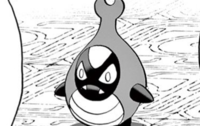
 For other sprites and images, please see Karrablast images on the Bulbagarden Archives.
For other sprites and images, please see Karrablast images on the Bulbagarden Archives.
